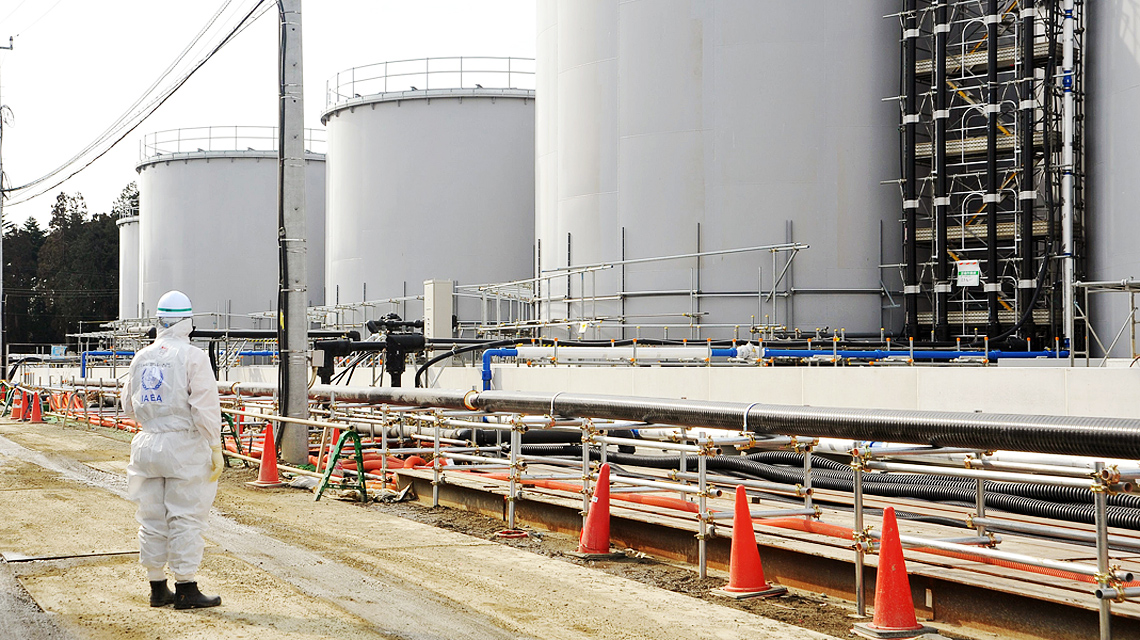On 8 May 2015 delegates gathered on the sidelines of the 2015
Review Conference of the Treaty on the Non‑Proliferation of Nuclear
Weapons (NPT) at United Nations headquarters in New York to learn more
about IAEA activities from 2010 to 2015 that are relevant to Article III
of the NPT.
Article III of the Treaty deals with safeguards, specifically noting that: "Each Non-Nuclear-Weapon State undertakes to accept safeguards... for the exclusive purpose of verification of the fulfilment of its obligations... with a view to preventing diversion of nuclear energy from peaceful uses to nuclear weapons or other explosive devices."
Eric Pujol, Advisor to the IAEA Deputy Director General with responsibility for the Department of Safeguards, gave the presentation, which highlighted some of the key challenges that will need to be addressed in the future. In the rapidly changing global nuclear landscape, more nuclear facilities and material are coming under IAEA safeguards, facilities undergoing decommissioning may involve a larger safeguards effort, many older nuclear power plants are being modernized and new facilities are becoming more technologically sophisticated. In short, demands on the IAEA's system of safeguards are growing and becoming more complex.
The presentation also looked into ways in which the IAEA addresses these challenges.
Pujol also spoke about the key legal agreements and guidance documents used in the application of safeguards in the IAEA's 164 Member States. He concluded with details of the strategies being employed to enhance productivity, noting that "success can only be achieved with states' political, technical and financial support."
Previously, the IAEA held a High-Level Event on the Peaceful Uses of Nuclear Technology on 27 April, a discussion on the implementation of the IAEA Nuclear Security Plan 2014-2017 on 29 April, and a discussion about the implementation of the IAEA Action Plan on Nuclear Safety on 1 May.
The IAEA is also holding an exhibition throughout the duration of the Review Conference highlighting its activities relevant to the implementation of the NPT.
Article III of the Treaty deals with safeguards, specifically noting that: "Each Non-Nuclear-Weapon State undertakes to accept safeguards... for the exclusive purpose of verification of the fulfilment of its obligations... with a view to preventing diversion of nuclear energy from peaceful uses to nuclear weapons or other explosive devices."
Eric Pujol, Advisor to the IAEA Deputy Director General with responsibility for the Department of Safeguards, gave the presentation, which highlighted some of the key challenges that will need to be addressed in the future. In the rapidly changing global nuclear landscape, more nuclear facilities and material are coming under IAEA safeguards, facilities undergoing decommissioning may involve a larger safeguards effort, many older nuclear power plants are being modernized and new facilities are becoming more technologically sophisticated. In short, demands on the IAEA's system of safeguards are growing and becoming more complex.
The presentation also looked into ways in which the IAEA addresses these challenges.
Pujol also spoke about the key legal agreements and guidance documents used in the application of safeguards in the IAEA's 164 Member States. He concluded with details of the strategies being employed to enhance productivity, noting that "success can only be achieved with states' political, technical and financial support."
Previously, the IAEA held a High-Level Event on the Peaceful Uses of Nuclear Technology on 27 April, a discussion on the implementation of the IAEA Nuclear Security Plan 2014-2017 on 29 April, and a discussion about the implementation of the IAEA Action Plan on Nuclear Safety on 1 May.
The IAEA is also holding an exhibition throughout the duration of the Review Conference highlighting its activities relevant to the implementation of the NPT.

































